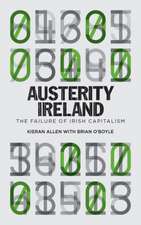Afghanistan in Transition: Looking Beyond 2014: Directions in Development: Countries and Regions
Autor Richard Hogg, Claudia Nassif, Camilo Gomez Osorioen Limba Engleză Paperback – 5 mar 2013
Preț: 206.28 lei
Nou
Puncte Express: 309
Preț estimativ în valută:
39.48€ • 42.87$ • 33.16£
39.48€ • 42.87$ • 33.16£
Carte tipărită la comandă
Livrare economică 22 aprilie-06 mai
Preluare comenzi: 021 569.72.76
Specificații
ISBN-13: 9780821398616
ISBN-10: 082139861X
Pagini: 174
Dimensiuni: 178 x 254 x 11 mm
Greutate: 0.35 kg
Editura: World Bank Publications
Seria Directions in Development: Countries and Regions
ISBN-10: 082139861X
Pagini: 174
Dimensiuni: 178 x 254 x 11 mm
Greutate: 0.35 kg
Editura: World Bank Publications
Seria Directions in Development: Countries and Regions




















